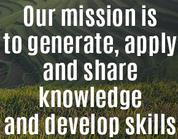GatewayGlobalPublishing.com
"21st Century Media Publishing...A World of Possibilities"
Education - Intelligence - Strategies - Solutions - Resources
Publishing Platforms
Publishing platforms vary widely depending on whether you are self-publishing a book, running a corporate blog, or creating digital magazines. The right choice depends on your content type, target audience, and level of control desired.
Book publishing platforms
Self-publishing platforms
These platforms allow authors to publish and distribute their books directly to readers.
Amazon Kindle Direct Publishing (KDP): A market leader that allows authors to publish ebooks, paperbacks, and hardcovers for free and gain access to Amazon's massive audience.
IngramSpark: Ideal for authors who want extensive distribution to independent bookstores and libraries globally, though it can have higher fees and is more complex than KDP.
Draft2Digital: An ebook aggregator that simplifies distribution across multiple retailers like Apple Books, Kobo, and Barnes & Noble.
Lulu: Offers print-on-demand services with customizable print options, along with ebook publishing and distribution.
Barnes & Noble Press: A self-publishing platform tied to the Barnes & Noble retail network for both ebooks and print-on-demand books.
Smashwords: An early pioneer in ebook publishing and distribution, offering a wide network of retailers.
Apple Books for Authors: Provides access to the Apple Books ecosystem for authors with a loyal user base.
Blurb: A platform specializing in high-quality visual books, such as photo books and magazines.
Traditional publishing houses
These companies are highly selective and require an author to secure a book deal, often through a literary agent.
The "Big Five":
Blogging and newsletter platforms
These are for authors and businesses that want to publish serialized fiction, articles, or newsletters.
WordPress (.com and .org): The most popular platform for blogging, offering extensive customization options through a vast library of plugins and themes. It offers a hosted version (.com) and a self-hosted option (.org) for full control.
Medium: A minimalist, community-driven platform for writers to publish articles and essays, with a built-in audience.
Substack: Designed for independent writers and journalists who want to monetize their content through paid email newsletters.
Ghost: An open-source platform optimized for professional bloggers who prioritize a clean, fast publishing experience.
Wix: A user-friendly, drag-and-drop website builder with built-in blogging tools.
Squarespace: Known for its professional-looking templates and robust integrated blogging tools.
Blogger: A free, simple platform owned by Google, best for beginners and hobbyists.
Wattpad: A popular platform for serialized fiction, especially for genres like romance, sci-fi, and young adult.
Royal Road: A platform focused on serialized fiction for the fantasy and sci-fi genres.
Digital magazine and interactive content platforms
These platforms specialize in creating visually rich, interactive online publications.
Issuu: A widely used platform for creating and distributing digital flipbooks from PDFs, with mobile-ready articles and templates.
Joomag: Provides a digital publishing platform for creating interactive magazines, catalogs, and ebooks.
Flipsnack: Allows users to transform PDFs into interactive HTML5 flipbooks with a customizable and SEO-friendly experience.
MagLoft: Specializes in creating responsive publications for mobile devices with a drag-and-drop editor.
Canva Docs: A document creation and publishing solution that integrates writing with powerful visual and graphic design features.
Academic and scientific publishing
These platforms are used by academics, researchers, and institutions to publish scholarly works.
Elsevier: A major academic publisher that releases millions of research articles annually.
Springer Nature: A global academic publisher known for its journals and databases.
Wiley: Another large multinational publisher of academic and professional books and journals.
Taylor & Francis: Publishes scholarly journals, books, and other reference materials.
Google Scholar: A search engine for scholarly literature that allows you to find articles, theses, and other research from various publishers.
JSTOR: An online database for academic journals, books, and primary source materials.
Publishing Solutions & Links
Publishing Content Online
Includes A Wide Variety
Beyond books and blogs, a wide variety of content can be published online, from interactive and visual media to specialized research and audio formats. The right type of content depends on your audience, goals, and the platforms you use.
Visual and interactive content
This category uses engaging, dynamic visuals to capture and hold an audience's attention.
Infographics: Present complex data, statistics, and information in a visually appealing, easy-to-digest graphic format.
Case studies: Detailed reports that highlight a problem and how a solution (e.g., a product or service) helped a client achieve their goals.
White papers: Authoritative, in-depth reports or guides on specific topics, often used to promote a product or highlight expertise in a field.
Interactive content: Includes quizzes, polls, calculators, and maps that encourage active user participation.
Digital magazines: Online versions of print magazines, often with rich multimedia elements like embedded videos and interactive graphics.
Presentations and webinars: Slide decks or live/pre-recorded video seminars that can be published on platforms like SlideShare or embedded on websites.
Audio and video content
These formats offer flexible ways for people to consume content on the go or while multitasking.
Podcasts: Digital audio files, often in a series, on a wide range of topics. They are published and distributed through platforms like Spotify and Apple Podcasts.
Live video and vlogs: Live broadcasts and video logs (vlogs) on platforms like YouTube, Twitch, and TikTok allow for real-time interaction and personal connection.
Educational courses: Pre-recorded video tutorials and learning modules published on platforms like Udemy or Skillshare for a paying audience.
Short-form and social content
This content is optimized for quick consumption and sharing on social media.
User-Generated Content (UGC): Content created and shared by a brand's customers, such as testimonials, social media posts, and reviews.
Social media updates: Short text posts, images, and videos published on platforms like LinkedIn, Instagram, and X.
Memes and GIFs: Humorous, relatable content that references popular culture, often used to build community and brand identity.
Newsletters: Email-based content for subscribers, providing updates, curated content, or exclusive offers. Platforms like Substack are dedicated to this format.
Specialized and website-based content
This is content that often lives on a website but isn't a traditional blog post.
Product pages and e-commerce content: Written descriptions, photos, and reviews that promote and sell products or services online.
Press releases: Official announcements about company news, product launches, or events, distributed to news outlets.
Help center content: Articles, tutorials, and FAQs that help customers use a product or service.
Academic papers: Research articles and scholarly work published in academic journals and databases.
Emerging Publishing Content Trends
Emerging online content trends are shifting towards authenticity, immersion, and personalized experiences, driven by advances in AI and a growing consumer focus on community. Video remains a top format, but creators are exploring new ways to engage audiences beyond traditional books and blogs.
Video content evolution
Short-form and vertical video: Platforms like TikTok, Instagram Reels, and YouTube Shorts have normalized short, snackable content. However, the format is evolving to balance quick entertainment with more informative, detailed content.
Long-form video comeback: While short-form video dominates social discovery, audiences are returning to long-form video on platforms like YouTube for in-depth content and emotional storytelling. Some platforms, like TikTok, are now also promoting longer videos.
Interactive and shoppable videos: Interactive videos allow viewers to participate through clickable quizzes, polls, and "choose your own adventure" paths. Shoppable videos integrate e-commerce directly into the content, enabling viewers to purchase products without leaving the app.
Live streaming: Live video content continues to foster real-time engagement and authenticity. It's used for product launches, Q&A sessions, and behind-the-scenes content that humanizes brands.
Authenticity and user-generated content (UGC)
Emphasis on authenticity: In an era of AI-generated content and social media fatigue, consumers seek out genuine, human-centric storytelling. Brands are sharing more behind-the-scenes content and raw, unfiltered footage to build trust.
Micro-influencer focus: Brands are increasingly partnering with micro-influencers who have smaller but more engaged and trustworthy followings. Their UGC is often seen as more authentic and relatable than content from large-scale influencers.
Community-driven co-creation: UGC is evolving beyond passive reposts to active collaboration. Brands engage their communities through challenges, beta tests, and content prompts to drive engagement and loyalty.
Employee-generated content (EGC): Content created by a company's employees is gaining traction as a way to humanize the brand and provide authentic, credible insights.
AI integration
AI-assisted content creation: AI tools are no longer just for generating text but are now used to produce, edit, and optimize visual content like videos and images. This helps creators work more efficiently and scale their content production.
AI and human collaboration: The most successful content strategies combine AI's speed with human creativity and insight. While AI can handle repetitive tasks, human oversight is needed to ensure content is authentic and ethically sound.
AI optimization for search: Search engine optimization (SEO) is adapting to AI-powered search results that focus on conversational language and context rather than just keywords. This includes optimizing for voice search and creating content that directly answers common questions.
Hyper-personalization and niche communities
Personalization at scale: AI and data analytics allow brands to create and adapt content in real time for individual users based on their preferences and past behavior. This is visible in dynamic email campaigns, personalized videos, and website content.
Rise of niche communities: As users experience social media fatigue, they gravitate towards smaller, private online communities on platforms like Discord and Slack. Brands are creating these dedicated spaces to build deeper connections with their most loyal customers.
Social search for niche interests: Younger generations are increasingly using social platforms like TikTok and Instagram as search engines to find niche products or reviews. Brands must create content that appears in these social searches and aligns with their target audience's interests
Five Content Marketing Publishing Solutions
The world of content marketing is changing faster than ever. Are you keeping up? In this post, we explore the top five content trends that will define 2025, providing you with the insights you need to connect with customers on a deeper level, drive engagement, and achieve your marketing goals.
1. Personalized experiences
Today’s audience expects a personalized experience, and brands that fail to deliver will be left behind. This isn’t just a nice-to-have; it’s a fundamental expectation driving purchasing decisions. The projected impact is significant: personalized content is forecast to boost ecommerce sales by a staggering 40% by 2028. This underscores the crucial role of personalization in driving revenue growth.
Personalization at scale means using data, machine learning, and sophisticated targeting to create content that resonates with each individual on a personal level. It’s about understanding your audience’s needs, preferences, and behaviors, and then tailoring your content to meet those specific demands. This goes beyond simply inserting a name into an email; it’s about creating dynamic, interactive experiences that feel custom-made.
Here’s how personalization is improving customer experiences:
Product recommendations
Imagine product suggestions so relevant they feel like they were hand-picked just for you. AI-powered systems analyze a wealth of data, including browsing history, purchase patterns, real-time interactions, and even contextual information like current trends, weather in the customer’s location, and social media activity, to provide incredibly precise product recommendations.
For instance, a clothing retailer might recommend items not only based on your previous purchases but also by considering current fashion trends, the weather in your area, and even products you’ve shown interest in on social media.
Dynamic content experiences
Websites and apps are becoming increasingly adaptive, responding in real-time to each visitor’s unique profile. The content, layout, and even calls to action change dynamically based on user demographics, previous interactions, and the current context. A returning customer might see personalized promotions and product suggestions, while a first-time visitor is presented with content aimed at educating them and establishing trust.
Personalized email marketing
Email campaigns have evolved beyond simple segmentation. Dotdigital’s Winston AI can analyze large amounts of data to create highly personalized email content, including subject lines, body text, and special offers. This approach maximizes open rates and click-through rates. Imagine receiving an email triggered by a specific action you took on a website, offering a discount on a product you were considering.
Interactive content
Interactive tools like quizzes, polls, and assessments gather valuable insights into user preferences, enabling the creation of even more personalized experiences. A financial services company, for example, could offer a personalized retirement planning tool that takes into account a user’s age, income, risk tolerance, and financial goals.
Chatbots and AI assistants
These tools provide personalized customer support and guidance, answering questions and offering tailored recommendations based on individual needs. Imagine a chatbot on a travel website helping you plan a trip, offering personalized recommendations for flights, hotels, and activities based on your budget and interests.
The key to a successful personalization strategy is the responsible use of data. Our recent Hitting the Mark report found that only 40% of brands have a preference center, which represents a significant missed opportunity.
A strong personalization strategy relies heavily on a well-designed preference center. Preference centers help users specify their preferences across various areas, including their favorite communication channel, desired messaging frequency, and specific interests.
2. The rise in employee-generated content (EGC)
Let’s be honest, we all know user-generated content (UGC) is a big deal. People trust authenticity, and a huge 79% of us say that UGC sways our buying decisions. Customers want to see real experiences from real people, not just polished ads.
But this year, we’re taking things a step further with employee-generated content (EGC). Think about it: instead of just your customers sharing their experiences, you can use your own team as storytellers and content creators. That’s a powerful way to connect with your audience on a whole new level.
And guess what? The stats back it up. A massive 93% of marketers believe UGC (including EGC) is more trustworthy than anything a brand creates itself. In a world that’s hungry for authenticity, EGC makes your brand feel human, relatable, and real.
Take a look at brands like Refy, Sheerluxe, and Mejuri. The brands are nailing EGC by using platforms like TikTok to showcase a more spontaneous and authentic side. From office outfit checks to “get to know the team” videos, the brands are offering a behind-the-scenes glimpse into the people who make the magic happen. Often, the content has nothing to do with the actual product, and that’s the point. It’s about building genuine connections and showing the human side of the brand.
Now, if you’re in the B2B space, LinkedIn is the place for EGC to shine. It’s not just about posting job openings or sharing company news anymore. With over 800 million users (and growing), LinkedIn offers a massive audience of professionals hungry for authentic insights. Think about it: your employees are experts in their fields.
Encourage them to share their perspectives on industry trends, discuss challenges and solutions, or even offer quick tips and tricks related to your product or service. For example, a sales team member could share a short video on how they use your software to solve a common client problem. This type of authentic, helpful content builds credibility, strengthens your brand’s reputation, and positions your employees as thought leaders.
Bottom line? EGC isn’t just a trend; it’s a must-have. People want to hear from the people behind the brand. And who better to share those authentic stories than your own team? By giving your employees a platform to share their unique perspectives and experiences, you’re tapping into a goldmine of engaging, trustworthy content that truly resonates.
3. Combining human and AI-generated content
Let’s face it: content creation can be challenging. However, what if you could boost your content production by combining the best of both worlds? This is becoming a reality with the rise of AI-powered content creation. AI tools can produce content up to ten times faster than humans, helping you save valuable time. 42% of businesses are already using AI to cut costs. Imagine what you could achieve with that extra time and budget.
An impressive 69% of marketers are already using AI to help them create content, and an even more impressive 72% report seeing better results. This isn’t just about saving time; it’s about creating higher-performing content that resonates with your audience.
By using AI, you can focus on crafting high-quality content that provides value to customers while also meeting Google’s E-E-A-T quality rating criteria. This helps improve search rankings and increases the chances of appearing in essential AI-generated summaries.
The future of content creation isn’t about choosing between humans or AI; it’s about using the capabilities of both. AI can take care of the heavy lifting by providing a foundation of high-quality, on-brand content at scale.
Then, you can add a creative touch: emotion, insight, and the unique perspectives that only humans can provide. This collaboration results in captivating content that leaves a lasting impression on your audience. It’s not a competition between humans and AI; it’s a partnership that creates content greater than the sum of its parts.
4. The importance of video content
An impressive 92% of internet users watch videos online every week. This isn’t just a statistic; it’s a transformation in how we consume content. People are no longer just scrolling; they are actively watching, engaging, and connecting through video on a massive scale.
What’s even more striking is that 84% of marketers believe video content is essential to their marketing strategies. Why is that? Because video has a unique ability to tell stories, evoke emotions, and forge genuine connections with audiences in ways that text and images cannot.
The financial benefits are significant as well. Brands incorporating video content experience almost 50% more growth. It’s evident that video content not only enhances engagement, but also significantly improves conversion rates.
But it’s not just about the numbers. Video is the key to cutting through the noise and building deep connections with your audience. Whether through short-form social media videos, immersive virtual experiences, or captivating long-form storytelling, video presents limitless opportunities for creativity and engagement.
Consider platforms like TikTok, YouTube Shorts, and Instagram Reels. These are not merely social media channels; they are storytelling platforms where brands can showcase authenticity, creativity, and truly connect with their audience. A 30-second video can achieve what a thousand-word blog post cannot: it can create an immediate, emotional connection.
Looking to the future, 44% of marketers are incorporating AI into their content production. This powerful combination promises to revolutionize content creation by increasing both efficiency and creative potential, paving the way for personalized and highly engaging video experiences.
Video content embodies authenticity, creativity, and human connection. It’s less about hard-selling and more about crafting resonant, inspiring stories that captivate and genuinely engage your audience.
5. Sustainable and ethical content
Today’s shoppers are not just buying products; they’re investing in values. As environmental and social consciousness grows, your content must reflect a genuine commitment to sustainability and ethical practices.
It’s no longer enough to simply say you care; you must demonstrate it through your actions and your content. Whether it’s showcasing your brand’s eco-friendly initiatives, amplifying the stories of your diverse team, or advocating for important social causes, your content must authentically reflect a dedication to making a positive impact.
Customers are increasingly demanding transparency and ethical behavior from the brands they support. 66% of shoppers are now looking for eco-friendly brands. This powerful trend is driving brands to create content that goes beyond mere marketing and truly highlights their sustainability efforts and ethical practices. It’s about building trust and demonstrating accountability.
Here’s how to effectively integrate sustainability and ethical considerations into your content strategy:
Show, don’t just tell
Instead of simply stating your commitment to sustainability, showcase concrete examples of your initiatives. Share stories about your eco-friendly manufacturing processes, highlight your use of recycled materials, or detail your efforts to reduce your carbon footprint. Visual content, like videos and infographics, can be particularly impactful in showing your commitment.
Amplify diverse voices
Highlight the stories of your diverse team members. Share their perspectives, experiences, and contributions to your company. This not only demonstrates your commitment to diversity and inclusion but also humanizes your brand and makes it more relatable.
Support relevant causes
Advocate for causes that align with your brand values and resonate with your target audience. Partner with non-profit organizations, participate in community initiatives, and create content that raises awareness about important social and environmental issues. However, ensure that your support is genuine and not just a marketing ploy. Consumers can easily spot “greenwashing” or performative activism.
Be transparent and authentic
Transparency is key to building trust. Be open and honest about your sustainability challenges and the steps you’re taking to address them. Admit when you’re not perfect and be transparent about your supply chain and manufacturing processes. Authenticity is paramount.
Engage in meaningful conversations
Don’t just broadcast your message; engage in conversations with your audience. Ask for feedback, answer questions, and address concerns about your sustainability and ethical practices. This two-way communication builds stronger relationships with your audience.
Refine your content strategy for a successful 2025
As we look to the rest of 2025, it’s clear that the content marketing landscape is evolving at a rapid pace, becoming more dynamic and sophisticated. The five trends we’ve discussed highlight a significant shift in how brands create and distribute content. By keeping up with these trends and adapting your strategies, you can stay ahead of the curve, connect more deeply with your audience, and drive meaningful engagement.
Real Publishing Solutions
Publishing solutions are the services and platforms that help authors, businesses, and media organizations produce and distribute content to readers. These solutions range from traditional publishing houses to digital platforms, covering everything from editing and design to distribution and royalty management.
Solutions for authors
Authors can choose from a variety of paths to publish their work, depending on their budget, desired level of creative control, and sales goals.
Traditional publishing
In this classic model, an author sells the rights to their manuscript to a publishing house, which handles all aspects of production, distribution, and marketing.
Best for: Authors who want significant support, widespread distribution, and the prestige associated with an established publisher.
Pros: The publisher provides professional editing, cover design, marketing, and access to a broad distribution network.
Cons: The process is highly selective, takes a long time, and offers lower royalties and less creative control compared to self-publishing.
Self-publishing
With self-publishing, the author manages the entire process from start to finish. They have complete creative control and receive higher royalties.
Best for: Authors who want full control over their content, pricing, and marketing, or for new authors who want to start their publishing journey quickly.
Notable platforms:
Amazon Kindle Direct Publishing (KDP): Offers user-friendly tools for publishing eBooks and print books with access to a massive audience.
IngramSpark: Provides broad print-on-demand and eBook distribution to over 39,000 retailers and libraries worldwide.
Barnes & Noble Press: A good option for reaching the Barnes & Noble customer base, including potential in-store placements.
Lulu: A versatile print-on-demand platform offering high-quality printing for a range of products.
Hybrid publishing
This model combines elements of both traditional and self-publishing. Authors pay upfront fees for a publishing package but retain more creative control and earn higher royalties than they would with a traditional publisher.
Best for: Authors who want a high-quality, professionally produced book but are willing to invest financially to retain control.
Solutions for businesses and enterprises
Organizations, from corporations to media outlets, use specialized publishing solutions to create, manage, and distribute content efficiently.
Digital publishing platforms
These cloud-based solutions help businesses create and deliver interactive content like e-books, magazines, and catalogs.
Key features: Interactive content creation, multi-channel distribution, analytics, and monetization tools.
ECM platforms help large organizations manage and organize their content and related workflows, such as rights and royalty management.
Key features: Digital asset management (DAM), rights management, royalty management, and automated workflows.
Advertising platforms
Solutions like iPublish Media help newspapers and other media outlets offer self-service platforms for advertisers to create and manage print and digital ads.
Publishing software
Design and layout software is essential for creating professional-quality documents for both print and digital publication.
Adobe InDesign: A professional industry-standard for desktop publishing and page layout.
QuarkXPress: Another professional-grade page layout and design program.
Scribus: An open-source and free alternative for desktop publishing.
Canva: A more user-friendly graphic design platform that can also be used for creating book layouts.
We have presented here on this page a wide
variety of solutions to address publishing issues.
You will not find another website that presents Links & Websites in such a unique manner
regarding publishing solutions for your project.
From self-publishing issues to advanced
digital and artificial intelligence issues going
into the future, we have presented here
numerous links to information that will
transform your knowledge into understanding
of how to be the most successful to put
together your own publishing project.
We dont take our mission lightly. One of our goals, among many, is to make sure you have enough knowledge in your mind to make
sure you are as successful as possible.
If you have any other advice, comments,
ideas, or questions, we welcome your input.
Please contact us via email at:
admin@GatewayGlobalPublishing.com
We would Love to hear from you.
Thank You for being here!










